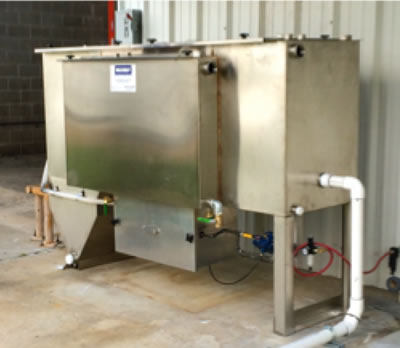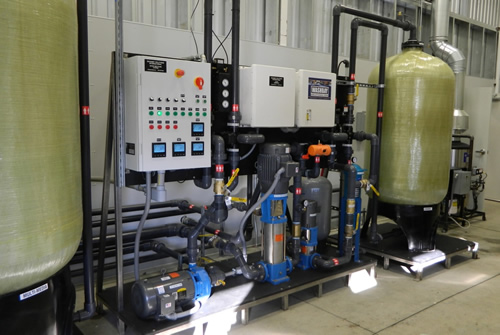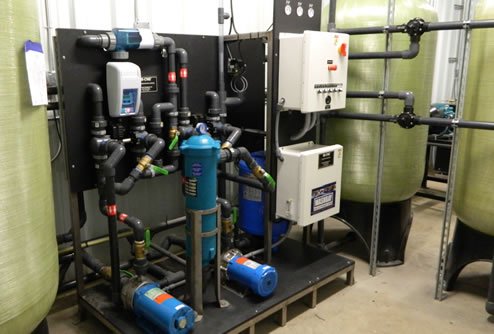The SPT Series Integrated Pretreatment Systems integrate an oil water separator with a clarifier to remove both floating oils and settlable solids.
Wash Water Treatment Products
Robustly designed and manufactured for commercial and industrial washing applications, our heavy-duty, multi-
stage, closed loop treatment systems treats the wash water so it can be used continuously without any discharge to
the sewer or surroundings. Many companies choose to haul this water away, but a more efficient way of removing
this cost is by recycling and reusing the water.
Stage 1 – Solids Settling
Most commercial washing operations produce a lot of solids so the first stage of our filtration process is the solids handling system. We help you develop site-specific solutions to eliminate as many solids as possible before the water goes to the next stage of filtration. Solutions include sumps, basins, trenches or screening systems that are custom-designed sized to fit your facility restrictions, washing processes and maintenance procedures.
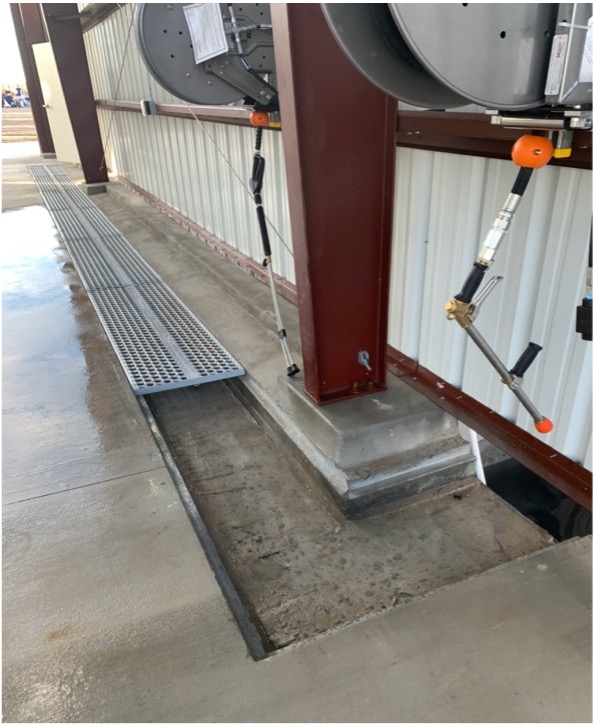 |
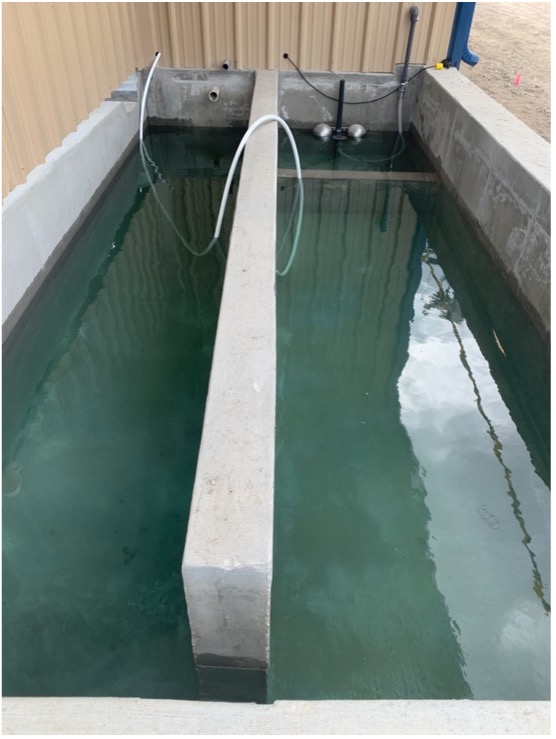 |
|
| Solids Handling Trench System | Solids Handling Basin System |
Stage 2 – Oils & Solids Separation
After the coarse solids settling, the water is processed through a multi-compartment stainless steel clarifier oil-water separator, which separates out smaller suspended solids, oil and water. In the first compartment, free oils float to the surface. In the second section, the stainless steel clarifying plates remove coarse amounts of oil and as much Total Suspended Solids (TSS) as possible. The angles of the non-clogging plates are 55° which allows solids to slide down the plates into the solids hopper, where they can easily be pumped out. Next, the water goes through our coalescing media which removes essentially 100% of all free and dispersed non-emulsified oils so the FOG effluent concentration can be as low as 5 ppm.
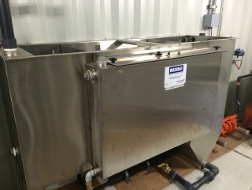 |
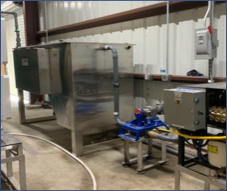 |
|
| SPT-10 Clarifier Oil Water Separator | SPT-30 Clarifier Separator with Pump & Control |
Stage 3 – Water Filtration, Odor Reduction & Polishing
After the clarifier oil-water separator, the water is pumped though several filtration steps including multi-media (sand, gravel, anthracite), blended activated carbon, polishing filter, and corona discharge ozone. These filters reduce odors and any contaminants to fewer than 10 microns in size, including emulsified oils, waxes, and other volatile organic compounds. Media, carbon, ozone and water storage volumes are typically customized to meet your particular application.
Closed Loop System Features
- Non-Ferrous Construction – Stainless Steel, PVC, Fiberglass
- Fully-Automatic, pre-wired
- Multi-Stage / Multi-Pass Filtration
- Clarifier Separator System
- Stainless Steel Clarifier Oil/Water Separator with 55° Hopper
- Advanced European coalescing media designed to remove oil droplets greater than 20 microns
- Electric or Air Diaphragm pump with controller
- Closed Loop Filtration System
- Automated Self-Cleaning Multi-Media and Carbon Fiberglass Filter Tanks
- Heavy-duty, high efficiency Re-Circulation Pumps
- Heavy-duty high efficiency Re-Pressurization Pumps
- Transfer pump to pump water from clarifier separator to system
- Heavy-duty Ozone System to control odors (up to 32 gms per hour)
- (2) Poly water storage tanks – UV Protected
- Sensors and interconnecting Schedule 80 plumbing
- NEMA-4X control panel
- PLC controller for automatic back wash operations
- All components mounted on heavy-duty stainless steel skid
Depending on the location, many options are available to maximize the efficiency of the wastewater treatment system including:
Optional Features
-
- Additional water storage tanks
- Bag filters
- Transportable equipment rooms
- Rain Diverter Systems
- pH control system
- TDS monitoring system
- Electric disk skimmers
- Automatic sludge dump systems
- Corrosion protection packages for high salt or corrosive applications
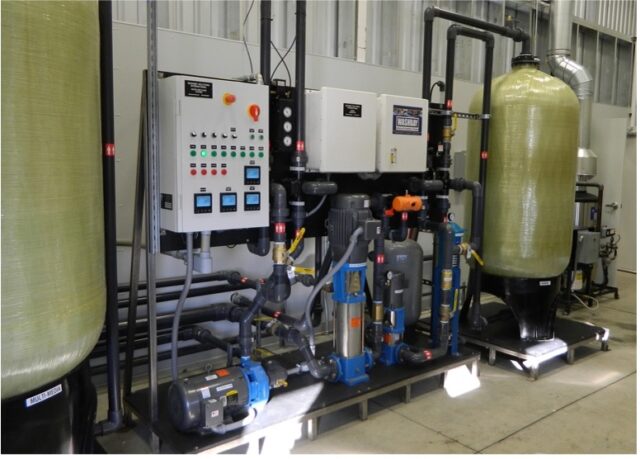 |
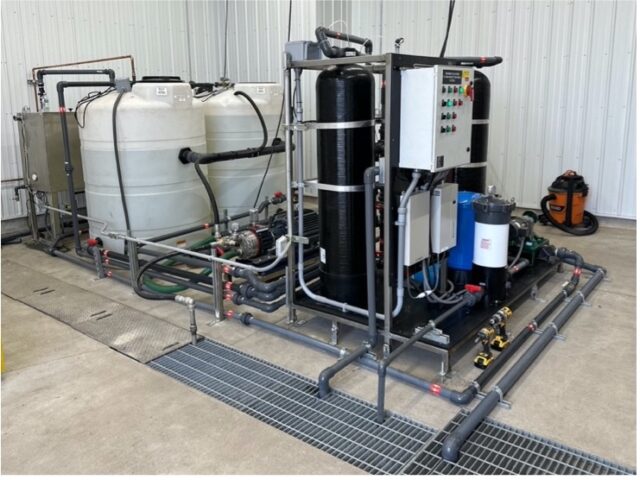 |
|
| CT-65 – 65 GPM Closed Loop Treatment System | CT-10 – 10 GPM Closed Loop Treatment System with Tanks & Separator |
Typical Closed Loop System Flow Process
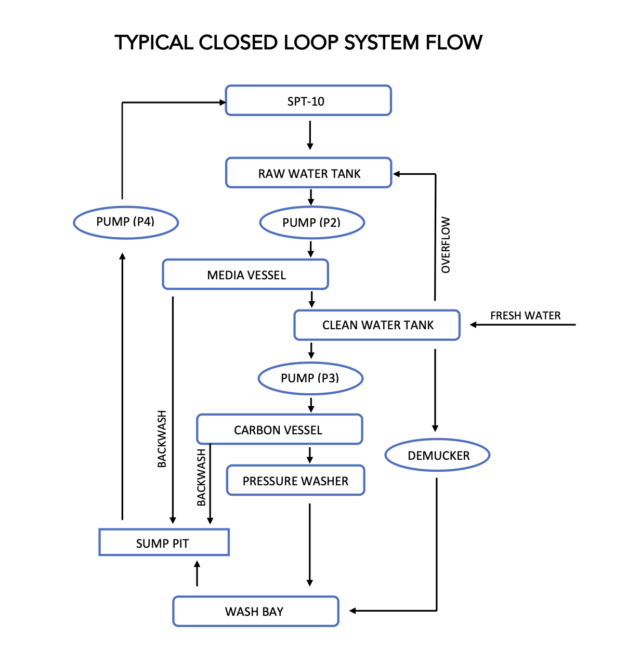
TYPICAL CLOSED LOOP SYSTEM SPECIFICATIONS
| MODEL | CT-10/10 | CT-35/20 | CT-65/50 | CT-100* |
| DESIGN FLOW RATE, GPM | 1-10 | 1-25 | 10-55 | 30-100 |
| COALESCING PLATE AREA, SF | 41 | 124 | 211 | 400 |
| COALESCING MEDIA, CF | 4 | 8 | 24 | 48 |
| CLARIFIER SEPARATOR SIZE, FT (WxLxH) | 3 x 7 x 5 | 3.5 x 8 x 6 | 4 x 10 x 6 | 5 x 11 x 7 |
| NON-EMUSIFYING INFLUENT PUMP, GPM MAX | 20 | 50 | 75 | 125 |
| MULTI-MEDIA, LBS | 300-500 | 500-1000 | 2500-2600 | 3700-4200 |
| ACTIVATED CARBON, CF | 4-15 | 10-40 | 20-40 | 40 |
| POLISHING FILTER, SET | 1 | 1 | 1 | 1 |
| RECLAIM RE-CIRCULATION PUMP, HP | 1.5 | 1.5 | 3 | 5 |
| RECLAIM RE-PRESSURIZATION PUMP, HP | 1 | 3 | 5 | 7.5 |
| DIRTY WATER STORAGE VOLUME, GAL | 500-750 | 500-1000 | 750-1500 | 1000-2500 |
| CLEAN WATER STORAGE VOLUME, GAL | 500-750 | 500-1000 | 750-1500 | 1000-2500 |
| OZONE SYSTEM, GRAMS/HR | 8-16 | 8-32 | 16-32 | 32 |
| RECLAIM CONTROL SYSTEM | PLC, Automatic, Manual or Off | |||
| RECLAIM PUMP FRAME SIZE, FT (WxLxH) (TANKS ADDITIONAL) |
4 x 6 x 6.5 | 4 x 8 x 8 | ||
| POWER REQUIREMENTS | 208 / 240 V 1 ph or 208 / 240 / 480 V 3 ph | |||
* LARGER CAPACITY SYSTEMS (200-1500 GPM) ARE AVAILABLE
APPLICATIONS:
- Commercial Trucking
- Locomotive
- Mining
- Marine
- Forklift
- Oil and Gas Drilling
In some applications with extensive contamination, a simple oil water separator is simply not enough to treat the water prior to sewer discharge. Our heavy-duty MM-Series treatment systems treat wash water in multiple stages so it can be safely discharged to the sewer or, in many cases, the surroundings.
Stage 1 – Solids Settling
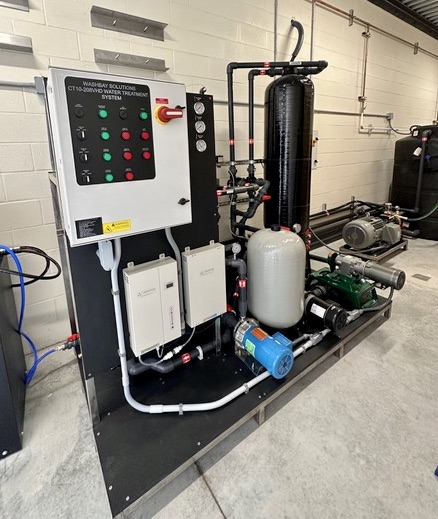
Almost all commercial washing operations produce some solids so the first stage of our filtration process is the solids handling system. We help you develop site-specific solutions to eliminate as many solids as possible before running the water through to the next stage of filtration. Solutions include custom-designed sumps, basins, trenches or screening systems.
Stage 2 – Oils & Solids Separation
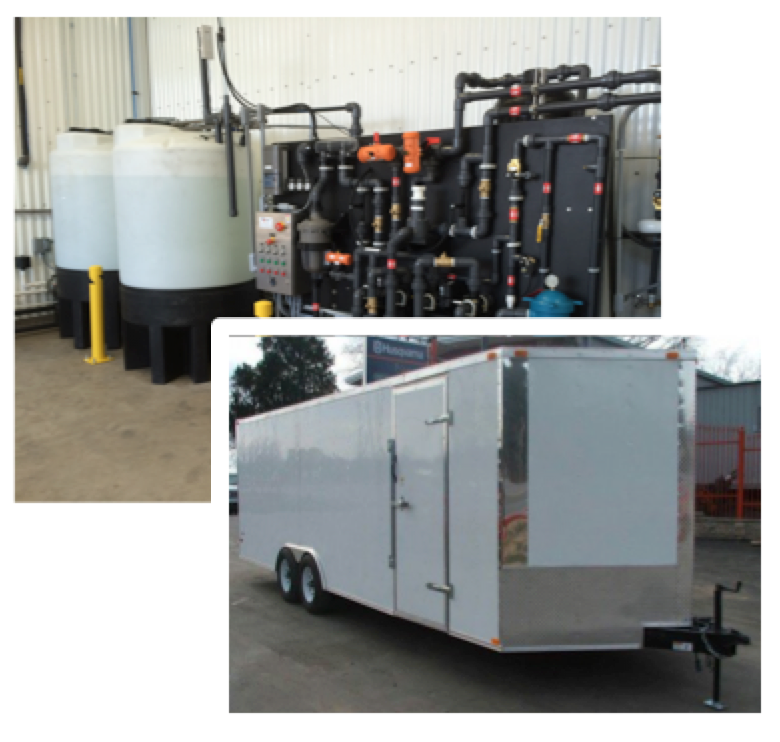
After the coarse solids settling, the water is processed through either a multi-compartment stainless steel oil water separator or a stainless steel clarifier oil-water separator, which separates out smaller suspended solids, oil and water. In the first compartment of the clarifier oil water separator, free oils float to the surface. In the second section, the stainless steel clarifying plates remove coarse amounts of oil from the waste stream and remove as much Total Suspended Solids (TSS) as possible. The angles of the non-clogging plates are 55° which will allow any solids to slide down the plates into the solids hopper, where they can easily be pumped out. Finally, the coalescing media removes essentially 100% of all free and dispersed non-emulsified oils so the FOG effluent concentration can be as low as 5 ppm.
Stage 3 – Water Filtration & Polishing
After the clarifier oil-water separator, the water is pumped though a multi-media (sand, gravel, anthracite) filter and then safely discharged to the sewer or surroundings. Processed water passing through the system will be free of substantially all emulsified oils, waxes and other volatile organic compounds with only limited soaps and detergents remaining in the treated water. If needed, a blended activated carbon or a carbon/clay mixture tailored to a particular waste stream can be added as an optional polishing filter.
System Features
- Non-Ferrous Construction – Stainless Steel, PVC
- Fully-Automatic, pre-wired
- Clarifier Separator System
- Stainless Steel Clarifier Oil/Water Separator with 55° Hopper
- Advanced European coalescing media designed to remove oil droplets greater than 20 microns
- Electric or Air Diaphragm pump with controller
- Discharge Filtration System
- Automated Self-Cleaning Multi-Media and/or Clay/Carbon Fiberglass Filter Tank
- Heavy-duty, high efficiency Pump
- Sensors and interconnecting Schedule 80 plumbing
- NEMA-4X control panel
- PLC controller for automatic back wash operations
- All components mounted on heavy-duty stainless steel skid
Depending on the location, many options are available to maximize the efficiency of the wastewater treatment system including:
Optional Features
- Can be configured with existing equipment
- SCADA and remote monitoring UL/CSA Listing
- Transportable equipment rooms
- Rain Diverter Systems
- Chemical/Acid/Salinity Resistant Pumps & Components
- pH control system
TYPICAL MM-SERIES SYSTEM SPECIFICATIONS
|
MODEL |
MM-10/10 |
MM-35/20 |
MM-65/50 |
MM-100* |
|
DESIGN FLOW RATE, GPM |
1-10 |
1-25 |
10-55 |
30-100 |
|
COALESCING PLATE AREA, SF |
41 |
124 |
211 |
400 |
|
COALESCING MEDIA, CF |
4 |
8 |
24 |
48 |
|
CLARIFIER SEPARATOR SIZE, FT (WxLxH) |
3 x 7 x 5 |
3.5 x 8 x 6 |
4 x 10 x 6 |
5 x 11 x 7 |
|
NON-EMUSIFYING INFLUENT PUMP, GPM MAX |
20 |
50 |
75 |
125 |
|
MULTI-MEDIA, LBS |
300-500 |
500-1000 |
2500-2600 |
3700-4200 |
|
OPTIONAL POLISHING CLAY/CARBON, CF |
4-15 |
10-40 |
20-40 |
40 |
|
FILTER PUMP, HP |
1.5 |
2 |
3 |
5 |
|
DIRTY WATER STORAGE VOLUME, GAL |
500-750 |
500-1000 |
750-1000 |
1000-1500 |
|
CONTROL SYSTEM |
PLC, Automatic, Manual or Off |
|||
|
PUMP FRAME SIZE, FT (WxLxH) |
3 x 6 x 6.5 |
3 x 8 x 8 |
||
|
POWER REQUIREMENTS |
208 / 240 V 1 ph or 208 / 240 / 480 V 3 ph |
|||
* LARGER CAPACITY SYSTEMS (200-1500 GPM) ARE AVAILABLE
APPLICATIONS:
- Commercial Trucking
- Locomotive
- Mining
- Marine
- Forklift
- Oil and Gas Drilling
Robustly designed for range of industrial applications from oilfield pipe washing to large equipment washing to large hand tools, our Solids Settling Systems with Geo Bags are designed to help control costs associated with solids removal from wash bay sumps.
They can be constructed in a range of sizes, configurations and materials, depending on your application. Main components include a multi-compartment sump, an air driven solids handling pump, a control system, geo de-watering bags, and optional holders.
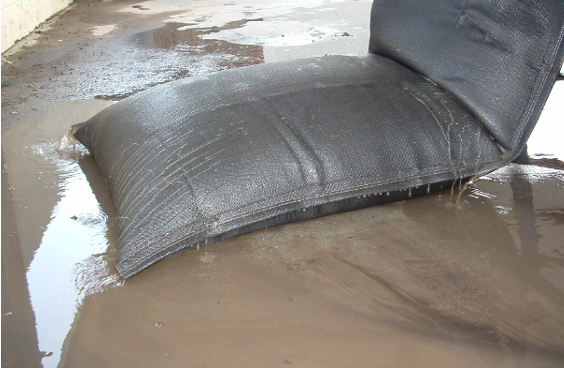
Benefits
- Built to any size and configuration
- Heavy-duty construction
- Range of porosities available
- Cost effective
- Easy to install and move
- Impervious to non-petroleum
System Components
Geo Bags – Placed in the sump or securely fastened to the end of a discharge pipe or hose, the bag slows down the flow of the incoming water, allowing the suspended solids to remain in the bag. Over time, the bag releases the water. Once the sediment-laden bag is de-watered, it can be picked up by a front-end loader and easily disposed of according to local enforcement agency regulations. The fabric is comprised of a heavy non-woven fabric and double chain stitched for extra security. Non-woven geo-textiles are approved by many local, state and federal agencies, including the Federal Highway Administration, U.S. Army Corps of Engineers, the Environmental Protection Agency and AASHTO.
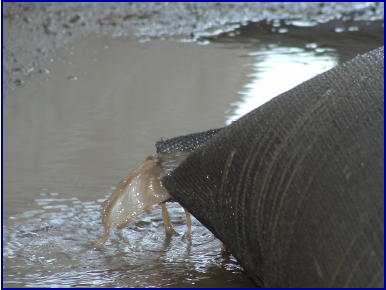
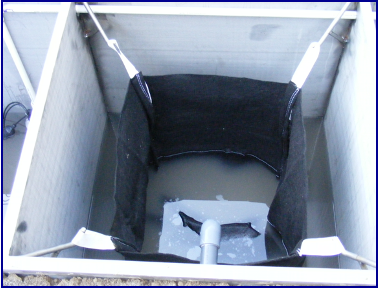
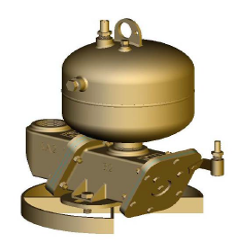
Pump & Control System – We use heavy-duty, solids handling, air driven pumps that can be fully or partially submerged. These pumps handle debris ranging from stringy to abrasive up to 2” diameter including slurries. The pump and control systems come with a variety of valves, seats, and control panel options that will be engineered to your particular application.
Sump System – The sump is an integral part of the solids handling and separation system. They can be built in stainless steel, aluminum or concrete, with multiple compartments, weirs or screens. Sump sizes are engineered for the washing application and water treatment system. Depending on the application and location, they can be placed above ground or buried.

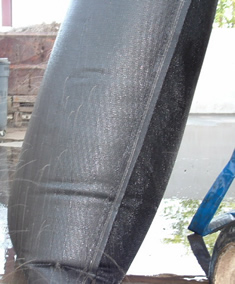
The easiest way to reduce your water costs is to reduce your fresh water usage. Recycling wash water also eliminates EPA and local impact fees.
How can inclined plate clarifiers help me save money?
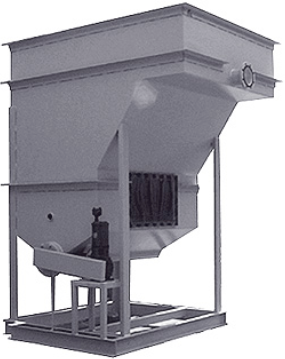
Our Inclined Plate Clarifiers are designed to precipitate and remove suspended material in water. The IPCL Systems employ the use of a series of plates inclined at an angle of 55°. This specialized design allows it to perform all of the functions of a conventional solids contact clarifier at a fraction of the space and cost.
Features & Benefits
- Low installation and maintenance costs
- Easily installed indoors
- Minimal start-up / re-start time
- Occupies less floor space
- Minimal field labor required to install
Performance
- Excellent removal of suspended solids down to 1 ppm
- Up to 1300 sq ft of plate surface area
- Effective removal of hard to settle solids such as colloids
- Ability to produce up to 3% – 5% concentrated sludge
| Model | Number of Plates | Length (feet) | Width (feet) | Height (feet) | Flow Rate (GPM)* |
|---|---|---|---|---|---|
| WB-IPCL-10 | 18 | 4 | 3 | 5.3 | 10 |
| WB-IPCL-20 | 19 | 5.5 | 4.5 | 7.5 | 20 |
| WB-IPCL-50 | 29 | 6.75 | 4.5 | 9 | 50 |
| WB-IPCL-65 | 29 | 7 | 5.5 | 9.3 | 65 |
| WB-IPCL-100 | 42 | 8.5 | 5.5 | 9.3 | 100 |
| WB-IPCL-150 | 42 | 9 | 6.5 | 11 | 150 |
| WB-IPCL-200 | 45 | 9.3 | 7.5 | 12 | 200 |
| WB-IPCL-250 | 50 | 10.75 | 7.5 | 13 | 250 |
| WB-IPCL-300 | 59 | 11.5 | 8.5 | 13.5 | 300 |
*Other flow rates and sizes are available.
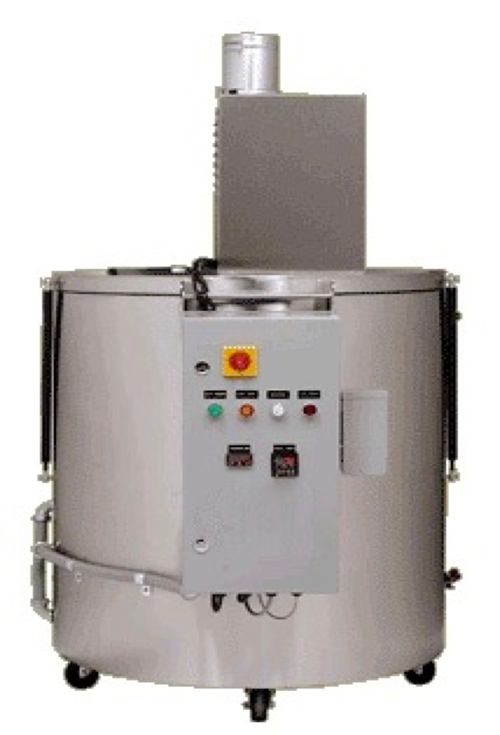
These stainless steel drum evaporators completely encapsulate a 55-gallon drum of wastewater and heat it from the outside, eliminating contact of the heating elements with the wastewater. This makes the drum evaporator extremely effective for de-watering waste streams with high solids content including water based inks, paints, and adhesives. A great advantage of a drum evaporator is that the dry waste residue does not have to be scraped or removed from the 55-gallon drum; it can simply hauled for disposal.
STANDARD FEATURES:
- Stainless steel construction
- Electrically Operated Incolloy Heating Elements – external to drum with low watt density
- Control panel with digital display
- Mist Eliminator System to capture entrained water droplets.
- Insulation on sides and lid
- Drum dolly to provide easy moving of drums
SYSTEM BENEFITS:
- Reduces the costs & liabilities of wastewater disposal
- Easy to install and operate
- Eliminates need to discharge wastewater
- Handles different waste streams simultaneously
Our easy-to-use drum evaporators are an economical way to reduce a wide array of waste streams. These systems come in two sizes and can be equipped with multiple options. Give us a call so we can recommend the best system for your application.
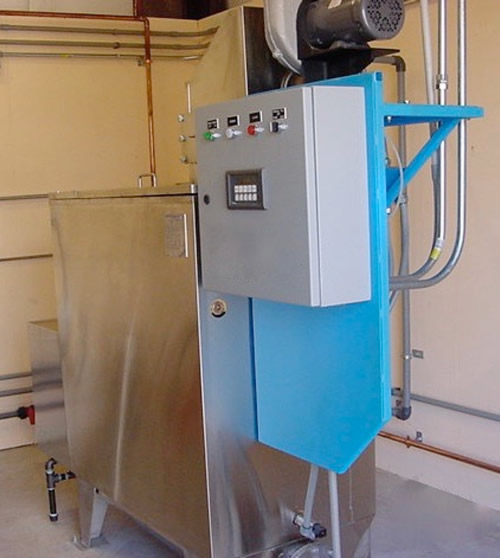
Our thermal evaporators provide one of the most cost effective methods of wastewater reduction on the market today.
Robustly designed and manufactured for heavy industrial applications, our thermal evaporators provide one of the most cost effective methods of wastewater reduction on the market today. Built to the highest standards, our system will provide years of trouble free operation in the harshest environments.
Unique features of our systems include our heat exchanger which provide extremely efficient heat transfer, resulting in reduced fuel costs, and our Mist Eliminator which captures entrained water droplets, resulting in less detrimental exhaust to the environment.
STANDARD FEATURES:
- Modem that allows for remote dial-in
- On-board diagnostics that monitor system functions.
- Easy to read Digital Display with text messaging
- Gas volume meter to monitor system throughput.
- Mist Eliminator System to capture entrained water droplets.
- Insulation rated at up to 450F on all six (6) sides.
- 6” Cleanout for ease of removal and tank cleaning
- Outer Skins constructed of 304 Stainless Steel
- Durable Aluminum Blower system
SYSTEM BENEFITS:
- Reduces the costs & liabilities of wastewater disposal
- Easy to install and operate
- Eliminates need to discharge wastewater
- Handles different waste streams simultaneously
Can use a wide range of heat sources
Our systems come in a wide array of volumes, heat sources, construction materials and options to meet any application. Give us a call so we can design a system for you.
Headquarters
WashBay Solutions International

